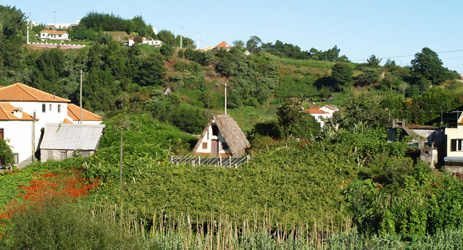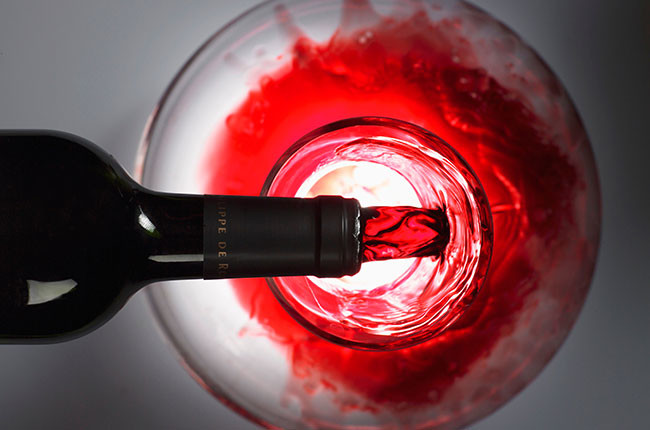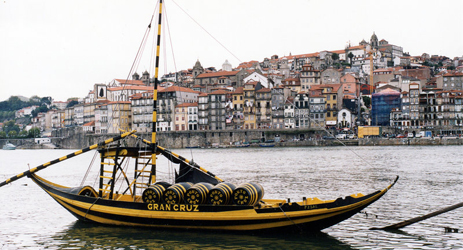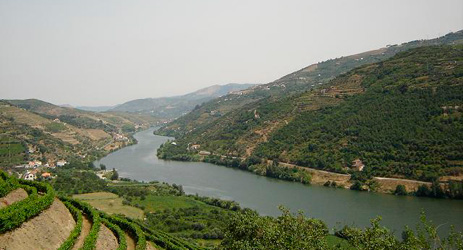Madeira is a Portugal-owned volcanic island situated around 1000 kilometres away from the Portugal mainland. Its location in the middle of the Atlantic has made it an important gateway for ships traveling from Europe to America, Africa and Asia. Its unique fortified wine — Madeira — became very popular in the 17th century, especially in the United States and the UK.

and adapt under Creative Commons BY-SA 3.0 Unported license
The hot, damp maritime weather of Madeira makes fungal disease a major threat to the vines. Therefore most vineyards there are grown on trellises to keep the canopy above the ground.
Traditionally Madeira was made using mainly four grape varieties: Sercial, Verdelho, Bual and Malmsey (Malvasia). However, like most Old-World wine producing countries, Phylloxera and powdery mildew ravaged the vineyards in Madeira in the latter half of 19th century. Traditional varieties were then replaced by phylloxera-resistant American vine species. Tinta Negra Mole now occupies the majority of grape plantings in Madeira, while traditional varieties are slowly retrieving their territories.
Madeira is a wine known for the ability to age almost indefinitely. Like Port, Madeira is also made by adding grape-based alcohol into the grape must to raise the alcoholic strength of the wine. The sweetness of Madeira can be achieved by two methods: first is by terminating the fermentation process while there is still residual sugar left (which is similar to the process of Port-making), and the other method is to ferment the wine until it’s dry, and add vinho surdo (fortified sweet grape juice) to it.
Madeira used to be loaded onto ships and sent out for very long voyages. Aging was accelerated by the heat from the voyage, creating a unique flavour. Modern wineries replicate this process by heating the wine artificially or storing the wine in a warm place.
Historically Madeira is named after one of the traditional grape varieties that were mainly used to make the wine: Sercial, Verdelho, Bual and Malmsey (Malvasia). Sercial is normally the lightest and driest, and Malmsey is the sweetest style. But as the plantings of these varieties decreased sharply due to the phylloxera disease, nowadays Madeira is mostly labelled by the degree of sweetness, such as “Dry”, “Medium Dry”, or “Sweet”, unless one of the four traditional varieties accounts for over 85% of the wine.
All rights reserved by Future plc. No part of this publication may be reproduced, distributed or transmitted in any form or by any means without the prior written permission of Decanter.
Only Official Media Partners (see About us) of DecanterChina.com may republish part of the content from the site without prior permission under strict Terms & Conditions. Contact china@decanter.com to learn about how to become an Official Media Partner of DecanterChina.com.










Comments
Submit